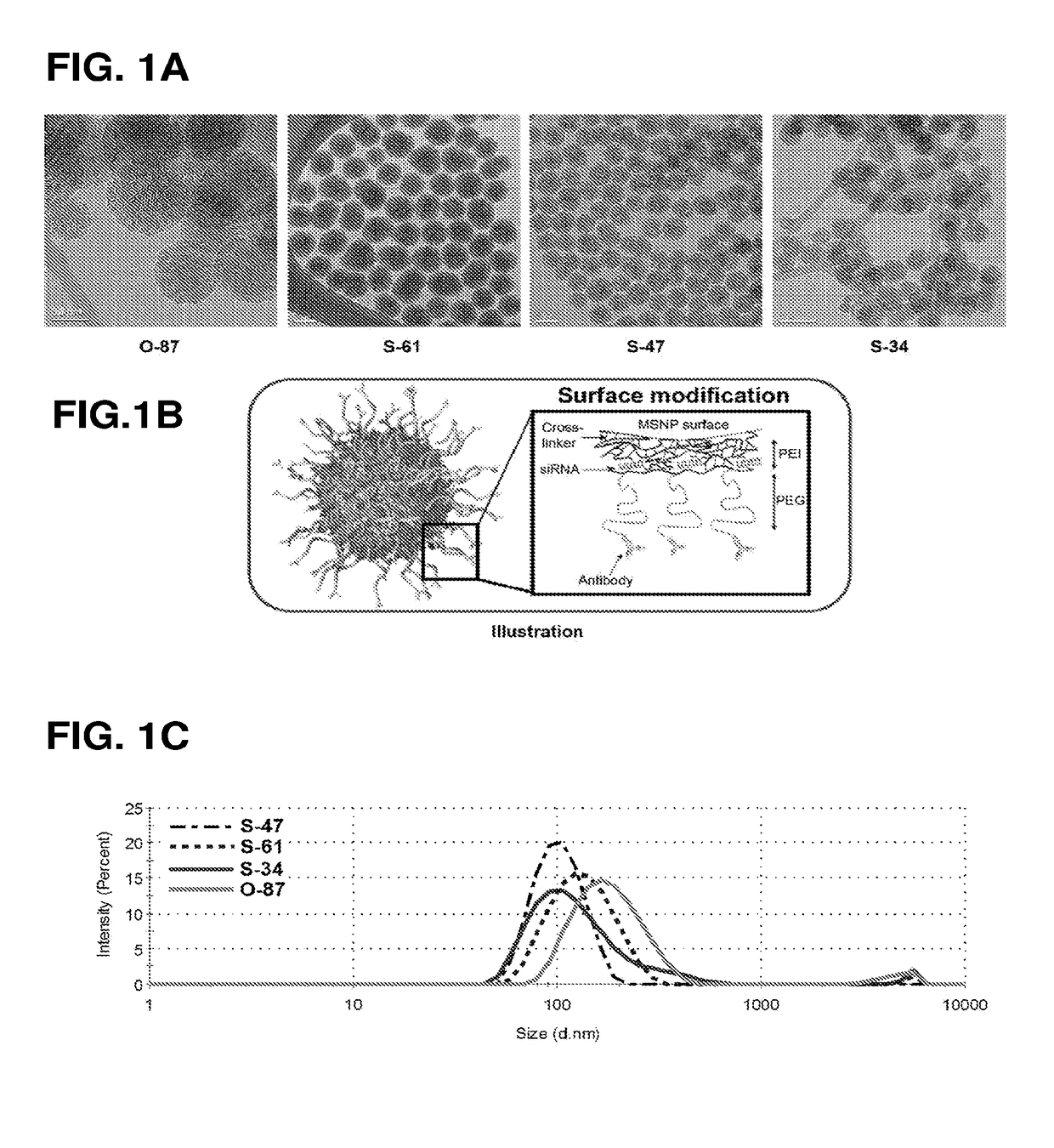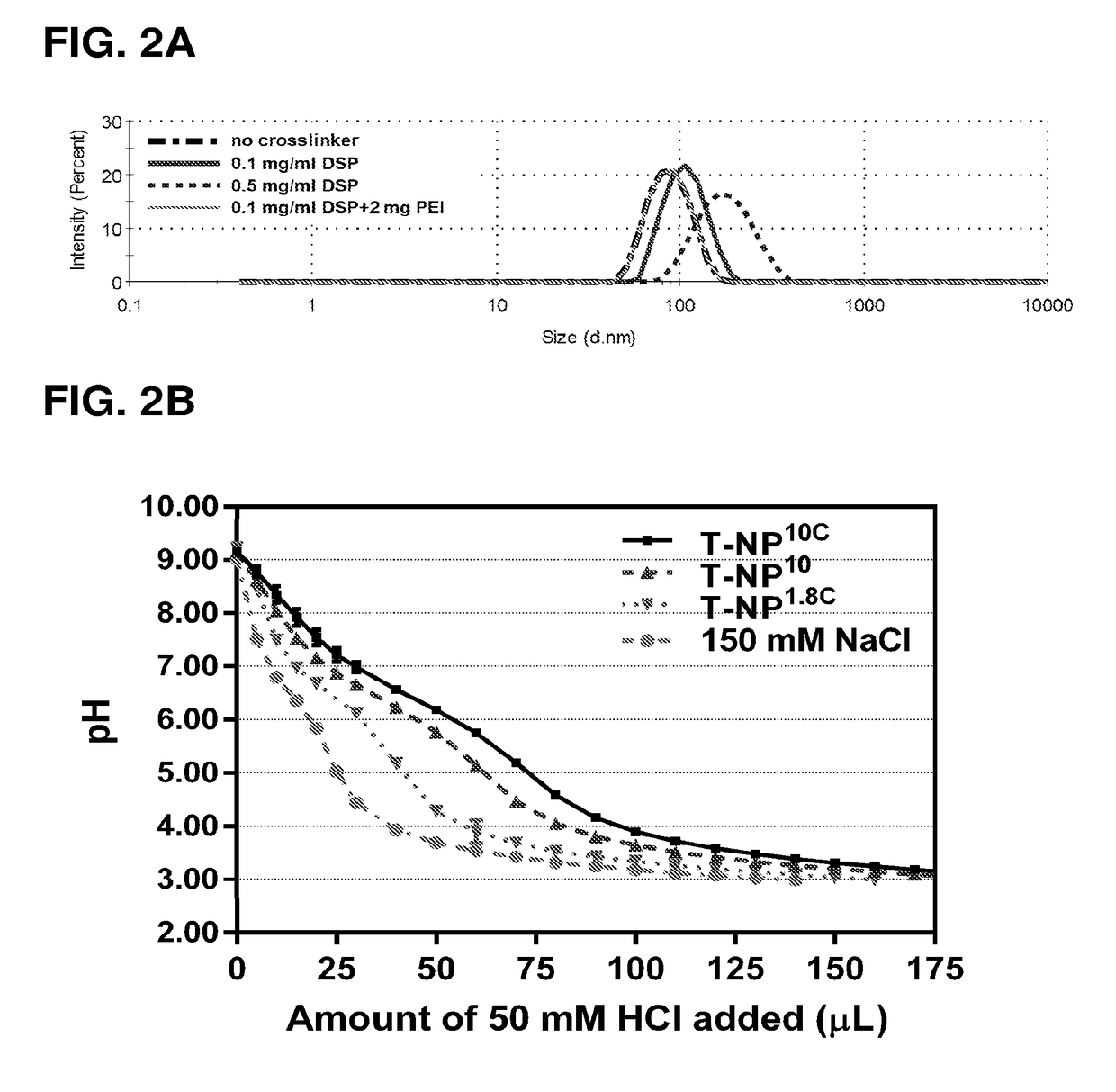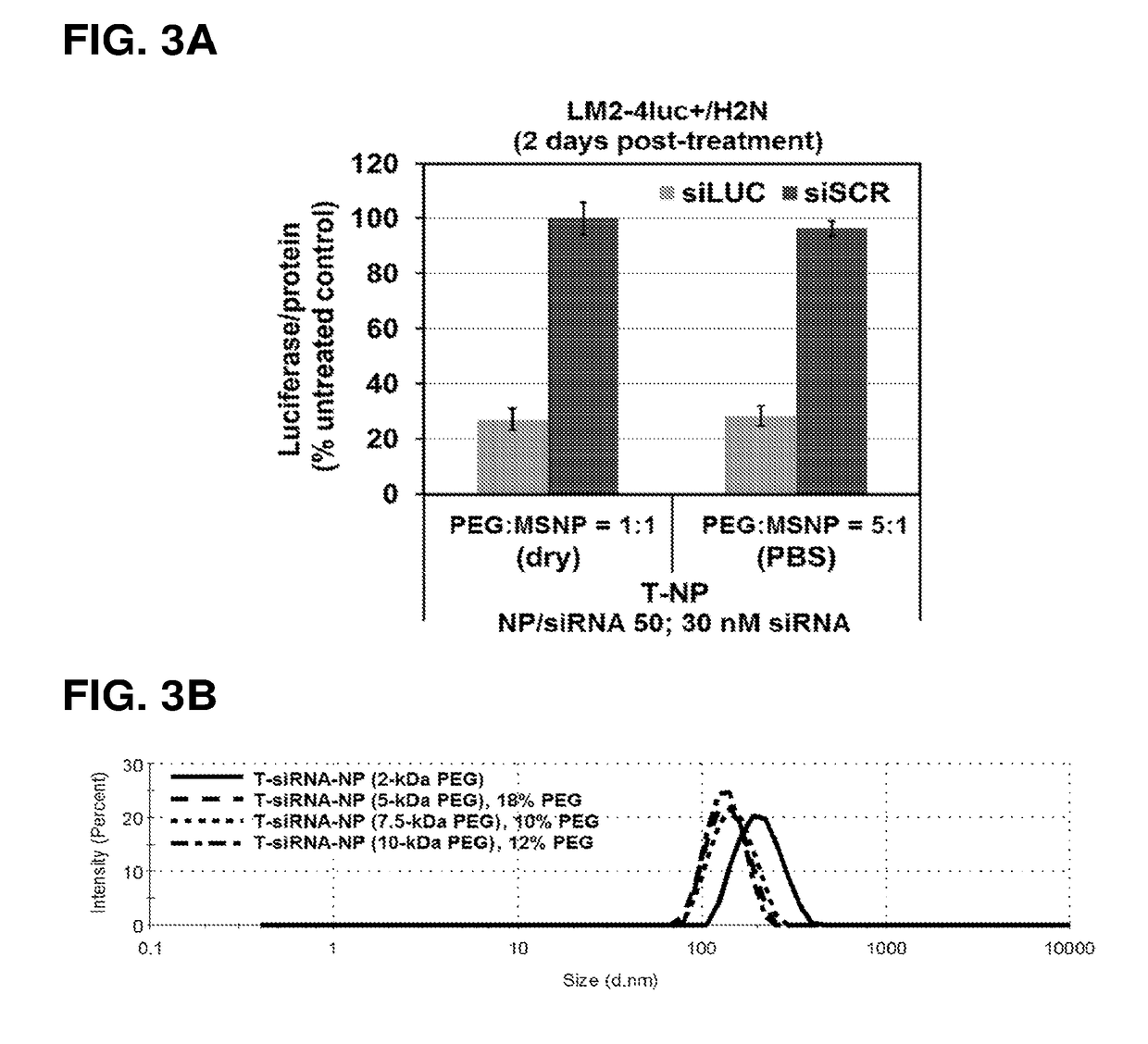Cross-linked polymer modified nanoparticles
- Summary
- Abstract
- Description
- Claims
- Application Information
AI Technical Summary
Benefits of technology
Problems solved by technology
Method used
Image
Examples
example i
Synthesis of Uniform Nanoparticle Cores
[0172]The sol-gel synthesis of mesoporous silica nanoparticle cores (MSNPs) was modified from previous reports (L. Pan et al., 2012; I. Slowing et al., 2007). For 47-nm MSNPs, nanoparticle (NP) (S-47), 0.15 M cetyltrimethylammonium chloride (CTAC) and 350 μL of triethanolamine (TEA) were mixed in 125 mL of water at 95′C. Then, 3 mL of tetraethyl orthosilicate (TEOS) was added, and the mixture was stirred for one hour. All chemicals were purchased from Sigma Aldrich, USA.
[0173]After mixing, the pellets were recovered from suspension by centrifugation, washed with a copious amount of ethanol, and dried overnight. The particles were then resuspended and refluxed in acidic methanol (0.6 M HCl in methanol) overnight to remove CTAC and TEA. Bare MSNPs were then washed with ethanol and dried in a desiccator overnight. MSNP (dry) size was measured with TEM (Phillips / FEI CM120 / Biotwin TEM, Hillsboro, Oreg.) and hydrodynamic size with Zetasizer (ZS-90 / Ma...
example ii
Synthesis of Non-Uniform Nanoparticle Cores
[0175]Non-uniform MSNPs (O-87) were synthesized in the presence of a strong base. 6 mM cetyltrimethyl ammonium bromide (CTAB) was dissolved in 240 mL of aqueous solution of pH 11.0 (adjusted by 2 M NaOH). When the temperature stabilized at 80° C., 2.5 mL of TEOS was added, and the reaction continued for 2 hours. After mixing, the pellets were recovered from suspension by centrifugation, washed with a copious amount of ethanol, and dried overnight. The particles were then resuspended and refluxed in acidic methanol (0.6 M HCl in methanol) overnight to remove CTAB. Bare MSNPs were then washed with ethanol and dried in a desiccator overnight. MSNP (dry) size was measured with TEM (Phillips / FEI CM120 / Biotwin TEM, Hillsboro, Oreg.) and hydrodynamic size with Zetasizer (ZS-90 / Malvern, Malvern, U.K.). These non-uniform nanoparticle cores were 87±14 nm in size (see, e.g., FIG. 1A).
[0176]MSNPs prepared from Examples I and II were then coated layer-b...
example iii
Polyethylenimine (PEI) Attachment to MSNPs and Cross-Linking Methods
[0177]MSNPs prepared as described in Examples I and II were coated with PEI by shaking 10 mg MSNPs and 2.5 mg PEI in ethanol solution for 3 hours at room temperature. Next, the PEI-MSNP, was pelleted down. The material then underwent PEG attachment in Example IV or PEI cross-linking first prior to PEG attachment. For the PEI cross-linking method, the PEI-MSNP was re-suspended in ethanol solution containing 0 or 2.0 mg PEI (10 kDa) and 0.1-0.5 mg / ml DSP (DSP; dithiobis [succinimidyl propionate]; Lomant's Reagent) as a crosslinker. The solution was shaken for another 40 minutes. The particles were pelleted down, washed, and resuspended in PBS (pH 7.2). The hydrodynamic sizes of materials made under these various cross-linking conditions are shown in FIG. 2A, in which using 0.1 mg / ml DSP and 2 mg PEI during cross-linking yielded the most desirable size (similar to no cross-linker), while cross-linking alone without int...
PUM
| Property | Measurement | Unit |
|---|---|---|
| Fraction | aaaaa | aaaaa |
| Percent by mass | aaaaa | aaaaa |
| Fraction | aaaaa | aaaaa |
Abstract
Description
Claims
Application Information
 Login to View More
Login to View More - R&D
- Intellectual Property
- Life Sciences
- Materials
- Tech Scout
- Unparalleled Data Quality
- Higher Quality Content
- 60% Fewer Hallucinations
Browse by: Latest US Patents, China's latest patents, Technical Efficacy Thesaurus, Application Domain, Technology Topic, Popular Technical Reports.
© 2025 PatSnap. All rights reserved.Legal|Privacy policy|Modern Slavery Act Transparency Statement|Sitemap|About US| Contact US: help@patsnap.com



